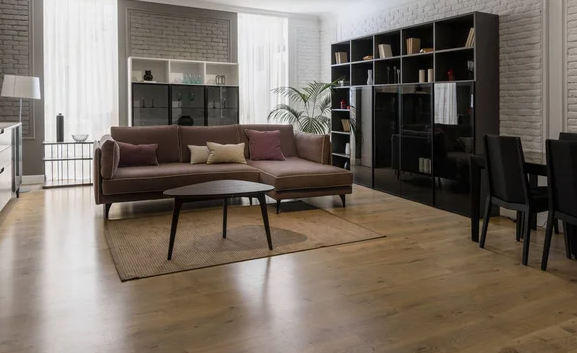Furnishing a home is an exciting process, but it can also feel overwhelming when faced with endless options. Whether you’re moving into a new space or looking to refresh your current one, creating a home that reflects your personal style while being functional requires some thoughtful planning. Here’s a step-by-step guide to help you furnish your home with confidence and ease.
1. Start with a Plan
Before diving into the world of furniture shopping, take a step back and assess the space you’re working with. Measure each room and note important features like windows, doors, and outlets. Once you have the dimensions, create a floor plan, either digitally or on paper, to visualize how furniture will fit. Decide on the layout and flow of each space to avoid buying pieces that don’t work.
Think about your priorities too—what rooms will you use most? Where do you want to spend more on quality items, and where can you save? By having a clear plan, you can set a budget and stick to it, ensuring you’re spending wisely as you furnish your home.
2. Choose a Style that Reflects You
Your home should be a reflection of your personality and lifestyle. Are you drawn to clean lines and minimalism? Or do you prefer a cozy, lived-in feel with rich textures and warm tones? Spend some time gathering inspiration from magazines, websites, or social media to determine what styles resonate with you.
Once you’ve settled on a general aesthetic—whether it’s modern, rustic, bohemian, or traditional—try to carry that theme throughout the home to create a cohesive look. While it’s okay to mix styles, sticking to a consistent color palette or material (like wood, metal, or fabric) will help tie everything together.
3. Invest in Key Pieces
Certain furniture items are worth the investment, as they’ll serve as the foundation of your home for years to come. These pieces include:
- Sofas: A comfortable and durable sofa is essential for the living room, so choose one that balances style and practicality.
- Beds and Mattresses: A good night’s sleep is non-negotiable, so invest in a high-quality mattress and a sturdy bed frame.
- Dining Table: Your dining table is a gathering spot, so prioritize durability and size. Choose one that fits your dining area and lifestyle.
Investing in these key pieces ensures you won’t have to replace them frequently, and they can anchor the design of your rooms.
4. Layer in Secondary Furniture
After you’ve secured the essential items, it’s time to add secondary furniture that complements your main pieces and serves functional purposes. Think about:
- Side tables, coffee tables, and consoles: These provide convenience and storage while enhancing your room’s design.
- Storage solutions: Shelving units, bookcases, and cabinets keep your home organized without sacrificing style.
- Chairs and accent seating: Additional seating, whether armchairs or stools, adds comfort and versatility to living and dining spaces.
This step is where you can also incorporate your personality and style preferences with fun designs or statement pieces.
5. Focus on Comfort and Functionality
A beautifully furnished home should also be comfortable and practical. Consider how you’ll use each room—do you need extra seating for guests? A desk for working from home? Prioritize pieces that serve a dual purpose, like ottomans with storage, or a daybed that can function as seating and a guest bed.
Comfort also applies to the materials you choose. Opt for soft fabrics on sofas and chairs, and don’t forget about rugs and window treatments that can add warmth and coziness to your rooms.
6. Accessorize to Personalize
Once your furniture is in place, it’s time to add accessories that make your home uniquely yours. Art, mirrors, pillows, throws, and decorative items bring life and personality to a space. Choose items that reflect your hobbies, travels, or family to give your home a personal touch.
Lighting is another important accessory that shouldn’t be overlooked. Floor lamps, table lamps, and pendant lighting not only illuminate a room but also enhance the ambiance and mood.
7. Don’t Rush the Process
Furnishing a home takes time, so don’t feel pressured to do everything at once. It’s okay to live in a space for a while before completing it. Over time, you’ll find the right pieces that make your home feel truly special and aligned with your needs.
Conclusion
Furnishing a home is an opportunity to create a space that reflects who you are and supports your lifestyle. By planning thoughtfully, investing in quality pieces, and layering in personal touches, you’ll design a home that is both stylish and functional. Take your time, enjoy the process, and watch your home transform into a place you love to be.



























